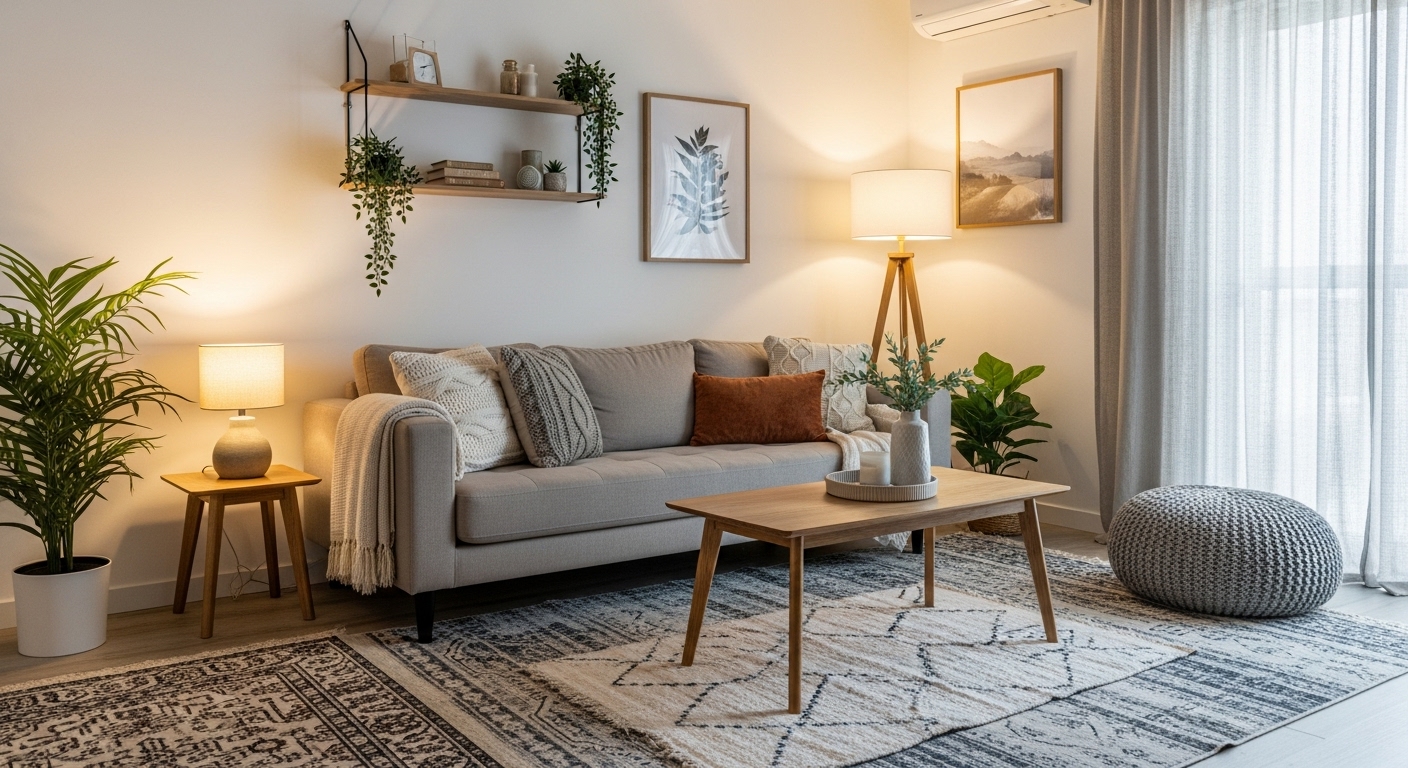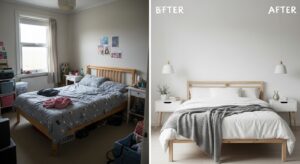Living in an apartment often comes with a unique blend of charm and challenge. While the space may be limited, that doesn’t mean your creativity has to be. In fact, small living rooms can become the most inviting and functional areas of your home with just the right design strategies. Whether you’re starting from scratch or looking to refresh your current space, these living room ideas for apartments will help you maximize every inch and reflect your personal style.
1. Start with a Clear Vision: Define Your Style
Before diving into furniture and décor shopping, take a moment to define your style. Are you drawn to minimalist, boho, industrial, or Scandinavian aesthetics? Pinterest boards, Instagram saves, or even mood boards can help solidify your preferences.
Understanding your vision will help narrow down color palettes, textures, and layouts. This becomes even more important in an apartment where space and storage are precious.
Pro Tip: Choose a cohesive color scheme with 2-3 core colors and complementary tones. Soft neutrals or light pastels can open up small spaces, while bold colors can be used for accents like pillows, throws, or artwork.
2. Maximize Space with Multi-Functional Furniture
One of the smartest living room ideas apartment dwellers can embrace is using furniture that serves more than one purpose. Think ottomans with hidden storage, nesting tables, or a sofa that transforms into a sleeper for guests.
Here are a few multi-functional options worth considering:
- Storage ottomans: Use them as coffee tables, extra seating, or to hide away blankets and remotes.
- Convertible sofa beds: Perfect for studio apartments or when friends stay over.
- Wall-mounted desks or fold-out tables: Ideal for working from home without dedicating too much space.
3. Create Zones in Your Apartment Living Room
In open-concept apartments or studio spaces, zoning can help give each section of your home a specific purpose. Use area rugs, furniture arrangement, or even lighting to define zones such as a lounging area, reading nook, or workspace.
How to Create Zones:
- A large rug can anchor your seating area.
- Bookshelves or open shelving units can divide spaces without blocking light.
- Use pendant lighting or floor lamps to visually separate areas.
4. Let There Be Light (Even If It’s Artificial)
Most apartments don’t have sprawling windows or skylights, so you’ll need to make the most of your lighting. Good lighting can change the mood and perception of a small room entirely.
Smart lighting tips:
- Use a mix of lighting: overhead lights, floor lamps, and table lamps.
- Choose light-colored curtains or sheer fabrics to allow maximum natural light in.
- Mirrors strategically placed across from windows can double the amount of natural light entering your space.
Bonus tip: Go for dimmable bulbs or smart bulbs so you can adjust lighting according to mood or time of day.
5. Play with Scale and Proportions
When decorating a smaller living room, it’s easy to assume that everything must be tiny. But in reality, a few larger pieces can often make a space feel more luxurious and less cluttered than multiple small ones.
For example:
- Choose a slightly larger statement couch or sectional.
- Use oversized wall art instead of cluttering the space with many small frames.
- A tall plant or floor lamp can draw the eye upward, giving the illusion of height.
Balance is key here—don’t overcrowd the space, but don’t be afraid of using statement pieces either.
6. Go Vertical: Use Wall Space Efficiently
When floor space is tight, walls become your best friend. Utilize vertical space to add both storage and style.
Wall space ideas:
- Floating shelves for books, plants, or art.
- Wall-mounted cabinets or media consoles.
- Pegboards or magnetic boards for organizing office supplies or displaying collections.
And don’t forget vertical décor. Tall mirrors, hanging plants, or vertical artwork can make your ceiling look higher and your space more open.
7. Keep It Clutter-Free and Minimal
Small apartment living rooms can become overwhelmed quickly. The more open and minimal the space, the larger it will feel. This doesn’t mean boring—it means intentional.
Decluttering tips:
- Use closed storage to hide away items.
- Rotate decorative pieces seasonally to keep things fresh without crowding.
- Stick to a few statement accessories rather than covering every surface.
A clutter-free space not only looks better—it also feels more relaxing and inviting.
8. Add Texture to Create Depth
In a smaller space, texture can add much-needed depth and visual interest. Without texture, a minimalist room can feel flat or sterile.
Easy ways to incorporate texture:
- Layer throw blankets in different materials (cotton, wool, faux fur).
- Mix and match pillow fabrics like velvet, linen, and knit.
- Choose furniture with natural elements like rattan, wood, or leather.
Texture helps create a more curated and cozy atmosphere, even in the smallest living rooms.
9. Incorporate Nature for a Breath of Fresh Air
Houseplants are one of the most affordable and impactful design elements. Not only do they freshen the air, but they also bring a sense of calm and vitality to the room.
Apartment-friendly plants:
- Snake plant
- ZZ plant
- Pothos
- Spider plant
- Succulents
Even if you don’t have a green thumb, faux plants or dried floral arrangements can add that earthy touch.
10. Make It Yours with Personal Touches
The most beautiful spaces are the ones that tell a story. Don’t be afraid to display items that are meaningful to you—family photos, artwork you love, or travel souvenirs.
Personalization ideas:
- A gallery wall featuring personal photos and prints.
- A cozy reading nook with your favorite books.
- Accent pieces in colors that make you happy.
Your living room should be a space where you feel at home. It should reflect your life, your style, and your story.




